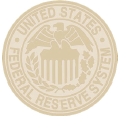Economy

EUROFER Expects Fragile Growth in 2014 for EU
Written by Sandy Williams
January 26, 2014
The Eurozone is expected to have mild yet fragile growth throughout 2014 according to the EUROFER Q1-2014 Economic and Steel Market Outlook compiled by the EUROFER Economic Committee (EC). Indicators are pointing towards increased growth for industrial production, an important component for carbon flat rolled steel production in Europe.
GDP has been edging up since Q2-2013 mostly due to strengthening demand for exports. EUROFER’s Economic Committee says “improving domestic demand conditions—supported by the continuation of accommodative monetary ECB policies and less fiscal tightening—suggest that in the course of 2014 economic momentum will gain some strength, to reach eventually almost trend growth in 2015.”
The Euro surprised analysts by making gains in late 2013 but is expected to soften as liquidity improves and as US Federal Reserve tapering occurs. Economic recovery, however, in the Eurozone is expected to limit the Euro’s depreciation.
EUROFER forecasts the EU economy will grow 1.3 percent in 2014, followed by 1.8 percent growth in 2015.
The steel outlook is looking brighter in the Eurozone. Preliminary data for the Steel Weighted Industrial Production index (SWIP) in Q4-2013 shows positive year-on-year growth in activity for the first time since fourth quarter 2011. All steel using sectors, except construction and mechanical engineering, contributed positively to growth in the fourth quarter. The EC expects activity in steel using sectors to gradually improve after a weak first quarter in 2014 with the SWIP index rising by 2.5 percent in 2014, followed by 3.5 percent in 2015.
Construction activity appears to be bottoming out as indicated by a 1.1 percent y-o-y fall in activity in Q3-2013 which was considerably less than the more than 7 percent fall in Q1 2013. Improvement is likely to be driven by the residential sector while the public sector remains weak. The EC says an improvement of 1.5 percent is expected for 2014 and close to 2.5 percent for 2015.
Automotive production in the EU has been recovering from double digit decline in Q1-2013 to a year-to-date drop of 1.7 percent in December. The outlook for passenger vehicle sales in2014-2015 is for moderate improvement mostly driven by replacement demand. Price margins will be pressured by stiff competition in a buyer’s market. Commercial vehicle sales are expected to fare slightly better. The EC anticipates EU automotive production to increase by 3 percent in 2014, which possible softening to 2.5 percent in 2015.
Mechanical engineering activity decline has been lessening in Q3 and Q4 after a steep drop in Q1. Cost cutting measures and efficiency improvement cut into machinery and equipment purchases over the past few years creating pent-up demand. Improving global investment and foreign demand will also help sales unless the Euro and pound sterling remain strong longer than expected and impede export demand from the EU. The European Commission expects mechanical engineering activity to rise 3 percent in 2014 and 4.5 percent in 2015.
Domestic appliances sales improved in the second half of 2013 due to weak output in 2012, residential building and renovation in Germany and the UK and solid export demand, especially to the US. Competition in the market has been fierce and manufacturers have moved production to low cost base markets to protect margins. Central Europe will outperform the rest of the EU during the forecast period. Activity is expected to rise 3 percent in 2014, followed by 3 percent in 2015.
Steel tube production in the EU fell 6.8 percent y-o-y in Q3 2013 with difficult operating conditions reported throughout the second half of 2013. Countries with higher production levels of large welded steel tubes suffered “extremely weak demand and heavy competition in the international line pipe markets,” said the report. Small welded precision tubes fared better with increased sales for producers in Italy, the UK and Sweden. Overall, there was a 4.5 percent decline in steel tube output in the EU in 2013. The construction of the Southstream natural gas pipeline in 2014 is expected to benefit EU producers. The first stretch of the pipeline will use around 700,000 tonnes (771,604 tons) of steel pipe and start in Bulgaria. Global overcapacity, however, is expected to keep competition fierce. The EC forecasts EU production of steel tubes will rise by around 3 percent in 2014 and 5 percent in 2015.
Apparent steel consumption was up 3.8 percent in Q3-2013 and is estimated to have jumped to 6.5 percent in Q4. Real steel consumption did better than expected in part due to the low inventory. Low inventories also meant a closer balance between real and apparent steel consumption last year resulting in annual apparent steel consumption only dropping 0.5 percent in 2013. Higher levels of demand and some restocking in the first part of 2014 is expected to push apparent consumption up by a little over 3 percent in 2014, followed by 3 percent in 2015.
Total EU steel imports rose in October and November driven by semis and long products. It is estimated import of beams rose by 50 percent y-o-y in 2013, along with a 38 percent rises in cold-rolled and a 20 percent rise in hot dipped metal imports. Overall total imports for 2013 are estimated to have increased by about 9.5 percent. Imports from third countries are expected to rise 2 percent in 2013 and continuing recovery in the EU steel market will result in higher imports in 2015.
Export of steel fell to third countries fell by 9.4 percent y-o-y in Q3 and were down 3 percent compared to the previous quarter. Overall net exports fell an estimated 2.5 percent in 2013. Rebar, wire rod and beams were the most commonly exported steel products with Algeria the main destination for EU long products. The key flat export market was Turkey. Exports are expected to increase moderately through the 2014-2015 period in tandem with global steel demand.
To read the EUROFER report in its entirety, click here.

Sandy Williams
Read more from Sandy WilliamsLatest in Economy

Beige Book: Tariff pressures mount, flat outlook
All districts reported “experiencing modest to pronounced input cost pressures related to tariffs, especially for raw materials used in manufacturing and construction.”

Steel exports recovered in May but still historically low
US steel exports rose 10% from April to May but remained low compared to recent years. This came just one month after exports fell to the lowest level recorded in nearly five years.

AISI: Raw steel production ticks up near recent high
The volume of raw steel produced by US mills inched higher last week, according to the American Iron and Steel Institute (AISI). After steadily increasing in April and May, domestic mill output stabilized in early June and has remained historically strong since.

Steel groups welcome passage of budget bill
Steel trade groups praised the passage of the Big Beautiful Bill (BBB) in Congress on Thursday.

Industry groups praise Senate for passing tax and budget bill
The Steel Manufacturers Association and the American Iron and Steel Institute applauded the tax provisions included in the Senate's tax and budget reconciliation bill.
